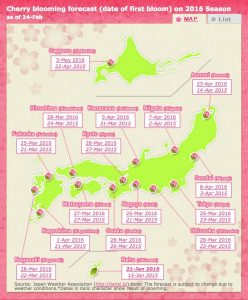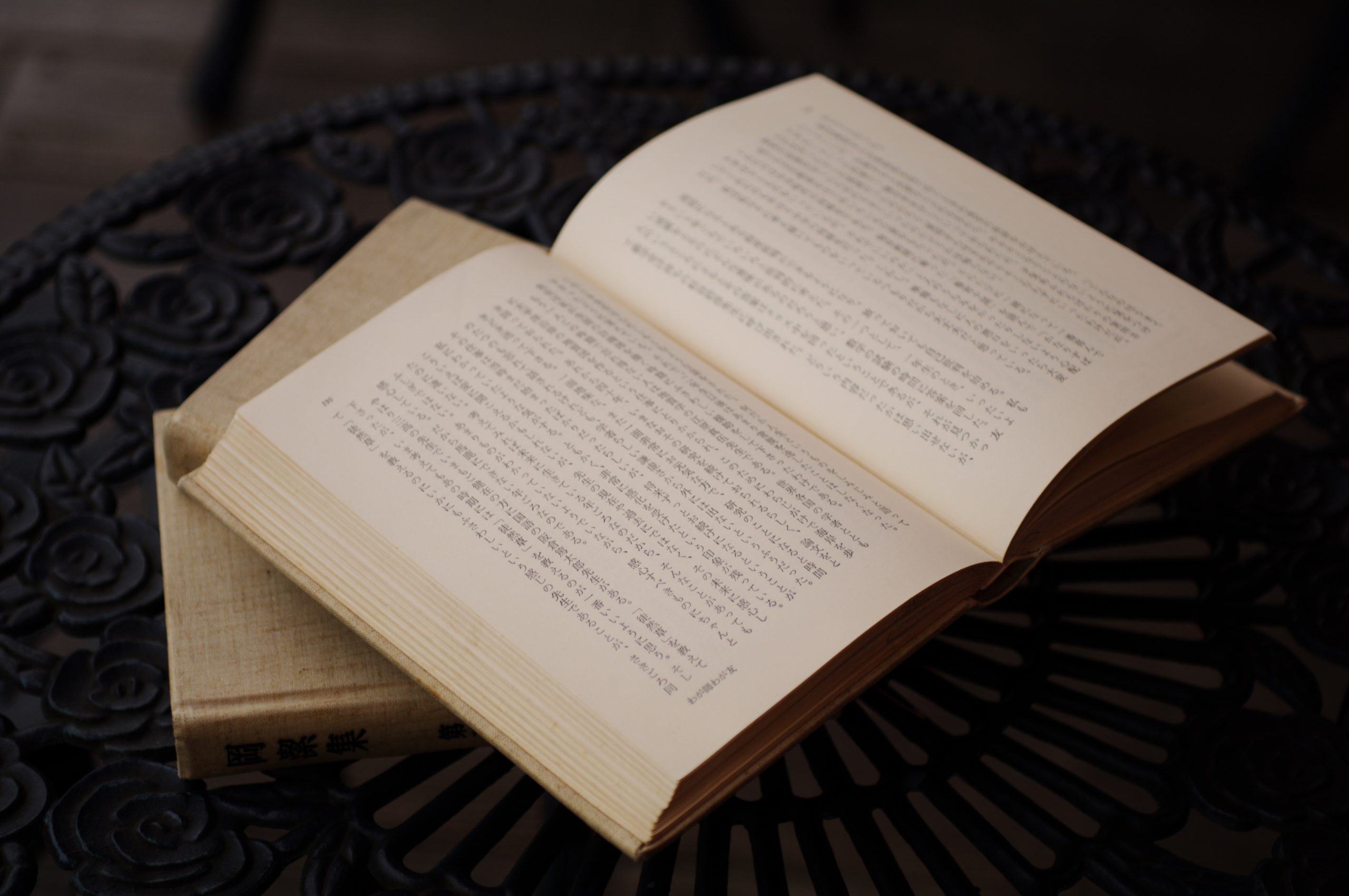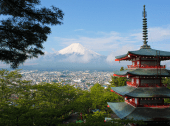
In the Japanese culture, one very important theme is the seasons and the flowers symbolizing the passage of time. Among them, one kind is particularly iconic, capturing the attention of visitors and locals: the cherry blossom, also very well known as sakura. All year round Japanese people long for the sakura season and wait with excitement the first flowers blooming in spring. Discover more about the importance of the sakura and the Japanese vocabulary associated with it.
The Sakura zensen
Japan is 3500 kilometers long and from north to south, the cherry blossom will be in peak bloom in one region after another. Since 1951, the Japanese Meteorological Agency announces every year a charted map to indicate the approximate blooming periods for sakura. You better check it out if you are planning to visit the specific location to view the cherry blossom!
The cherry blossom front, called sakura zensen, is a term that was coined by news agencies in the sixties. The sakura zensen is written with the association of the kanji for sakura flower 桜, for front 前 and for line 線: 桜前線. This expression refers to the advance of the sakura blooming across the country. The announcement is long awaited by Japanese society!
Not only will the Japan Meteorological Agency forecast the cherry blossom, but the agency will also record the opening and full bloom all across Japan: from Kyuushuu (March) to Hokkaido (May).
1. Cherry blossom forecast
さくらの開花予想
Sakura no kaika yosou
2. Opening day of the cherry blossom
開花日
Kaika bi
3. Day of the full bloom
満開日
Mankai bi
The sakura front starts around January in Okinawa archipelago and then will gradually reach Kyoto and Tokyo at the end of March and the beginning of April.
The Sakura symbol
Sakura flower is richly symbolic and you will encounter its symbol frequently in art, music, traditional culture but also commercial goods etc. . During the blooming season, time-limited products with sakura flavor and cherry blossom design are sold everywhere in Japan. Did you know that the cherry blossom is represented on the 100 hundred yens coin?
In Japanese culture, the cherry flower represents the ephemeral nature of life and is strongly associated with the concept “mono no aware”. This concept implies a strong aesthetic sense and an appreciation of the fleeting nature of beauty. The sakura is a symbol of the pathos of things: the flower quickly perishes taking away its beauty. The blossoms will fade away around one week after the peak bloom.
4. 物の哀れを感じる
Mono no aware wo kanjiru
To appreciate the beauty of nature
Sakura Hanami
The reason as to why Japanese people pay particularly close attention to the sakura forecast is that it announces the flower-viewing parties, called “o hanami”.
The hanami is a celebration of the beauty of flowers blossom and is particularly known for the sakura but not limited only to this flower. The plum tree flower blossom is also very much appreciated. Written with the kanji for flower 花 and for view 見, it literally means “flower viewing”: お花見.
Japanese people will turn out in large numbers at parks, shrines, and temples with family and friends, to relax and enjoy the beautiful view. Hanami is a very old custom, said to date back centuries ago. People go under the trees to have lunch and to drink sake during cheerful picnic party. Some areas are so famous – for example, Ueno and Shinjuku Gyoen Parks in Tokyo, that thousands of people will gather in the compact crowd during the peak.
Now, let’s practice some Japanese conversation!
A: 花見をしたことがありますか。
Hanami wo shita koto ga arimasu ka.
Have you done a hanami before?
B:いいえ、ありません。
Iie, arimasen.
No, I didn’t.
A:よかったら、日曜日に一緒に行きませんか。
Yokattara, nichi youbi ni issho ni ikimasen ka.
If you would like to, why don’t we go on Sunday?
B:いいですね。行きましょう。
ii desu ne. Ikimashou.
Nice, let’s go.
A:じゃ、後で連絡しますね。
Ja, ato de renrakushimasu ne.
Then I will contact you later.
B:分かりました。楽しみにしています。
Wakarimashita, tanoshimi ni shite imasu.
Understood. I am looking forward to it.
















